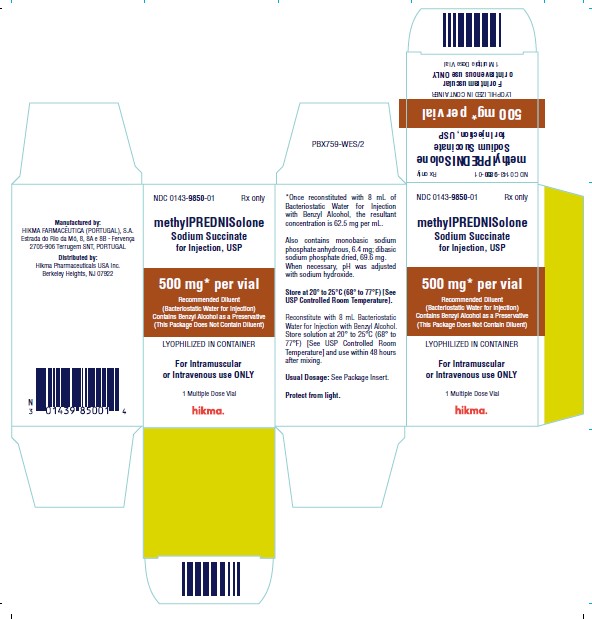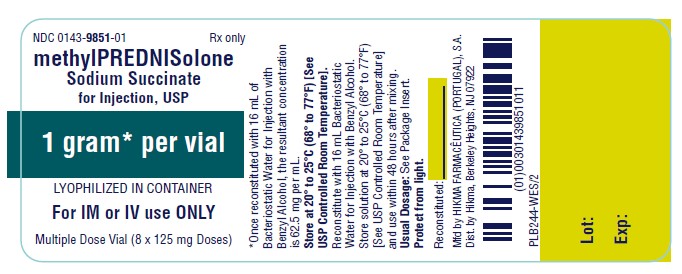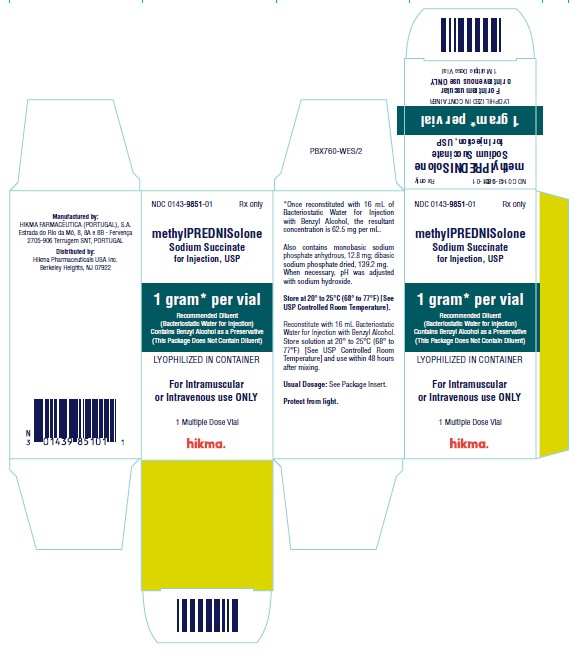Methylprednisolone Sodium Succinate Injection, Powder, For Solution while Breastfeeding

What is Methylprednisolone Sodium Succinate Injection, Powder, For Solution used for?
Is using Methylprednisolone Sodium Succinate Injection, Powder, For Solution safe or dangerous while breastfeeding?

Nursing Mothers Systemically administered corticosteroids appear in human milk and could suppress growth, interfere with endogenous corticosteroid production, or cause other untoward effects. Because of the potential for serious adverse reactions in nursing infants from corticosteroids, a decision should be made whether to continue nursing, or discontinue the drug, taking into account the importance of the drug to the mother.
Methylprednisolone Sodium Succinate Injection, Powder, For Solution Breastfeeding Analsys
Methylprednisolone while Breastfeeding
SafeCAS Number: 83-43-2
Excreted into breast milk in non-significant amount with no problems reported in breastfed infants whose mothers were treated at a daily dose as high as 8 mg for a long time period. On long term treatments it would be advisable to wait for 2 - 4 hours until the next nurse to minimize the transfer of drug to breast milk. By waiting for 2 a 4 hours after a methylprednisolone megadose or a pulse therapy dose, the transfer into breast milk may be minimized as well. At high doses, intra-articular treatment with other steroid drugs (Triamcinolone) have transiently affected milk production. Steroids administered before delivery may delay initiation of phase II of Lactogenesis ("milk come in") and decrease milk production in the first postpartum week. Decreased production has been seen while taking Dexametasone. Steroid drugs are commonly used for Pediatric treatment with no side effects when infrequently used and for short-time periods. The American Academy of Pediatrics rates it compatible with breastfeeding. WHO Model List of Essential Medicines (2002) rates it compatible with breastfeeding
Methylprednisolone Sodium Succinate Injection, Powder, For Solution Breastfeeding Analsys - 2
Methylprednisolone while Breastfeeding
CAS Number: 83-43-2

Amounts of methylprednisolone in breastmilk are very low. No adverse effect have been reported in breastfed infants with maternal use of any corticosteroid during breastfeeding. With maternal intravenous doses of methylprednisolone 1 gram, fully breastfed infants would receive doses less than their daily cortisol output, and much less than a therapeutic dose on the day of infusion; accumulation of the drug does not occur in breastmilk with 3 consecutive daily doses. Avoiding breastfeeding during the infusion for as little as 2 hours after a 1 gram intravenous dose would markedly reduce infant exposure. Breastfeeding abstinence for 2 to 4 hours would further reduce the infant dose. Local injections, such as for tendinitis, would not be expected to cause any adverse effects in breastfed infants, but might occasionally cause temporary loss of milk supply.

What should I do if I am breastfeeding mother and I am already exposed to Methylprednisolone Sodium Succinate Injection, Powder, For Solution?
As usage of Methylprednisolone Sodium Succinate Injection, Powder, For Solution is mostly safe while breastfeeding hence there should not be any concern. In case of any change in behavior or health of your baby you should inform your health care provider about usage of Methylprednisolone Sodium Succinate Injection, Powder, For Solution else no further action is required.
My doctor has prescribed me Methylprednisolone Sodium Succinate Injection, Powder, For Solution, what should I do?
Definitely, Methylprednisolone Sodium Succinate Injection, Powder, For Solution is safe in lactation for baby. No wonder your doctor has recommended it.
If I am using Methylprednisolone Sodium Succinate Injection, Powder, For Solution, will my baby need extra monitoring?
No extra baby monitoring required while mother is using Methylprednisolone Sodium Succinate Injection, Powder, For Solution
Who can I talk to if I have questions about usage of Methylprednisolone Sodium Succinate Injection, Powder, For Solution in breastfeeding?
US
National Womens Health and Breastfeeding Helpline: 800-994-9662 (TDD 888-220-5446) 9 a.m. and 6 p.m. ET, Monday through Friday
UK
National Breastfeeding Helpline: 0300-100-0212 9.30am to 9.30pm, daily
Association of Breastfeeding Mothers: 0300-330-5453
La Leche League: 0345-120-2918
The Breastfeeding Network supporter line in Bengali and Sylheti: 0300-456-2421
National Childbirth Trust (NCT): 0300-330-0700
Australia
National Breastfeeding Helpline: 1800-686-268 24 hours a day, 7 days a week
Canada
Telehealth Ontario for breastfeeding: 1-866-797-0000 24 hours a day, 7 days a week
